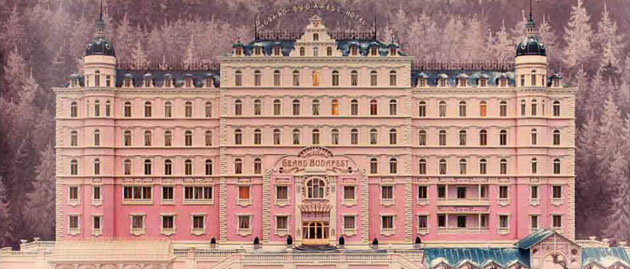Adam Stockhausen

AS: Does Wes Anderson suggest a lot of references like books and movies?
AS: Yes, absolutely. For Grand Budapest he had a whole list of things that we watched and discussed together.
AS: Out of curiosity what were a few of those?
AS: The Shop Around The Corner, Bergman’s The Silence, The Earrings of Madame de…, The Life and Death of Colonel Blimp.
AS: How about Spielberg?
AS: Yes, we had a few that we were watching for sure. The Spy Who Came in From the Cold was one that we were looking at quite a bit.
AS: How was Wes Craven different?
AS: I adore Wes Craven. He’s really great to work with. We made two movies. My Soul to Take and Scream 4. He hired me for my first design job on My Soul to Take. The big difference with his movies is that you have to figure out how to deal with the blood!
AS: Special paint so that the blood comes off easily?
AS: Exactly. Which is fine when you’re on a set. It’s a little trickier when you’re on location at somebody’s house. But we got a system down. We had to add a certain amount of sheen to the paint on the walls and we had a clear film that we would put down on hardwood floors. It was like vehicle wrap that doesn’t have anything printed on it and we’d cover the whole floor. Because the blood gets in the cracks!
AS: On Twelve Years a Slave was Steve McQueen as involved in the details as Wes Anderson?
AS: We didn’t talk as much about a specific color, but we did talk just as much about the specifics of the details of the story. The research was pretty intense and we did our best to get it right. Solomon’s is such an important story and the last thing in the world I wanted was to have to have some detail blow it. For instance I remember us discussing a whip that was used on Solomon, a cat o’nine tails. What is that exactly and why is it called that? And you start looking into the damage that this thing was designed to inflict on the human body. It’s terribly upsetting. But it’s important. It’s not just a random whip. Steve wanted to find those real details.
So it was a process of digging and trying to find as many of these specific details as we could to bring them into the story. And that was a piece where, back to your earlier question, we wanted to be totally invisible because Steve wanted to be in the past. He wanted these plantations to NOT feel like Hollywood stage sets. He wanted to be on working farms in the 19th century. The great houses of these plantations are still standing but everything else is gone, so we rebuilt the farms in the back. And we’d build as much of it as fully as we could so that you could walk into all of those different buildings and they would be finished and dressed on the inside. There weren’t jacks and big lights just off camera because the process of making the film was one of total intimacy for Steven and his wonderful DP Sean Bobbitt and the actors.
This was one of my favorite films last year with some of my favorite actors. I love being able to read about how it all came to life through the production designer and thank you very much for creating a site where aspiring Production Design/Art Directors, such as myself, can come and learn from the best. Thank you!